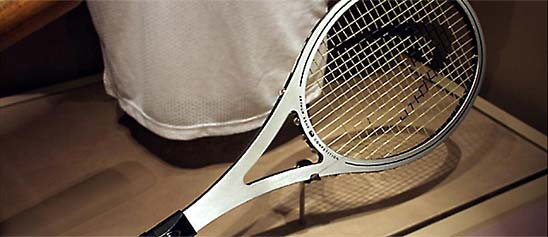
The nation's passion for sports is obvious every day—at NASCAR races, kiddie soccer matches, and countless other contests. From a handball used by Abraham Lincoln to Chris Evert's tennis racket to a baseball signed by Jackie Robinson, the roughly 6.000 objects in the Museum's sports collections bear witness to the vital place of sports in the nation's history. Paper sports objects in the collections, such as souvenir programs and baseball cards, number in the hundreds of thousands.
Leisure collections encompass a different range of objects, including camping vehicles and gear, video games, playing cards, sportswear, exercise equipment, and Currier and Ives prints of fishing, hunting, and horseracing. Some 4,000 toys dating from the colonial period to the present are a special strength of the collections.
Our collection database is a work in progress. We may update this record based on further research and review. Learn more about our approach to sharing our collection online.
If you would like to know how you can use content on this page, see the Smithsonian's Terms of Use. If you need to request an image for publication or other use, please visit Rights and Reproductions.